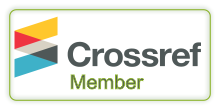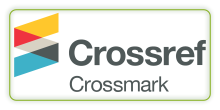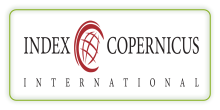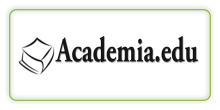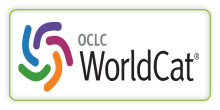ORAL HEALTH PROTECTION THROUGH AN AYURVEDA POLY HERBAL FORMULATION- AN IN VITRO STUDY
DOI:
https://doi.org/10.29121/jahim.v3.i1.2023.26Keywords:
Oral Health, Poly Herbal Formulation, Plant ExtractAbstract [English]
Introduction: Natural medicines prescribed by the traditional Ayurvedic medical system of Sri Lanka have been extensively used to treat and prevent oral diseases.
Objective: Here, we investigated the antimicrobial effect of Ayurveda polyherbal formulation, mentioned in authentic text as Gandusha (mouth wash) consisting of Jasminum officinale leaves, Terminalia chebula fruits, Tinospora cordifolia stem, Desmodium triflorum whole plant and Glycyrrhiza glabra roots.
Methods: Anti-microbial susceptibility of the poly herbal preparation against common oral pathogens (Staphylococcus aureus, Escherichia coli, Pseudomonas aeruginosa and Enterococcus faecalis) was tested using agar well diffusion method. Minimum inhibitory (MIC) was expressed in mg of freeze-dried extract per millilitres of agar solution.
Results: The plant extract has considerable antimicrobial activity against Staphylococcus aureus and Enterococcus faecalis. The lowest MIC of 250mg/ml was shown against Enterococcus faecalis and Staphylococcus aureus.
Conclusions: The polyherbal formulation is effective in mitigating the bacterial growth and hence enhance the oral health protection.
References
Agnivesha (2008). Charaka Samhita Revised by Charaka and Dhridabala with the Ayurveda Dipika Commentary of Chakrapanidatta V. Y. T. Acharya, C. S. Sansthan and Varanasi (Eds.) (5th ed).
Ayurveda Pharmacopoeia (2002), Department of Ayurveda. Part Three, 1, 215-216, 305-306.
Bag, A., Bhattacharyya, S. K., Bharati, P., and Kumar, N. (2009). Evaluation of Antibacterial Properties of Chebulic Myrobalan (fruit of Terminalia chebula Retz.) Extracts Against Methicillin Resistant Staphylococcus Aureus and Trimethoprim-Sulphamethoxazole Resistant Uropathogenic Escherichia Coli. African Journal of Plant Science, 3(2), 25-29. https://doi.org/10.5897/AJPS.9000109.
Gunasekara, T., Radhika, N., Ragunathan, K. K., Gunathilaka, D., Weerasekera, M. M., Hewageegana, H., Arawwawala, L. A. D. M., and Fernando, S. (2017). Determination of Antimicrobial Potential of Five Herbs Used in Ayurveda Practices Against Candida Albicans, Candida Parapsilosis and Methicillin Resistant Staphylococcus Aureus. Ancient Science Of Life, 36(4), 187-190. https://doi.org/10.4103/asl.ASL_179_16.
Gupta, D., Gupta, R. K., Bhaskar, D. J., and Gupta, V. (2016). Comparative Evaluation of Terminalia Chebula Extract Mouthwash and Chlorhexidine Mouthwash on Plaque and Gingival Inflammation −4-week Randomised Control Trial. Oral Health and Preventive Dentistry, 14(3), 5-12. https://doi.org/10.3290/j.ohpd.a32994.
Kadam, A., Prasad, B. S., Bagadia, D., and Hiremath, V. R. (2011). Effect of Ayurvedic Herbs on Control Of Plaque And Gingivitis: A Randomized Controlled Trial. Ayu, 32(4), 532-535. https://doi.org/10.4103/0974-8520.96128.
Kanchan, N. M., Shubhangi, S. M., and Umesh, K. B. (2019). Determination of antibacterial activity of leaf extract of Jasminum officinale against oral pathogens in ulcer treatment. International Journal of Science and Research, 4(6), 235-247.
Khan, U. A., Rahman, H., Niaz, Z., Qasim, M., Khan, J., Tayyaba, and Rehman, B. (2013). Antibacterial Activity of Some Medicinal Plants Against Selected Human Pathogenic Bacteria. European Journal of Microbiology and Immunology, 3(4), 272-274. https://doi.org/10.1556/EuJMI.3.2013.4.6.
Liu, C., Wu, Y., Zhang, Q. J., Kang, W. Y., Zhang, L., and Zhou, Q. D. (2013). Advances in Studies on Chemical Constituents and Biological Activities of Desmodium Species. China Journal of Chinese Materia Medica, 38(23), 4006-4014.
Peiris, K. P. P., Wanigasekara, D. N., Sudesh, A. D. H., and Karunarathne, E. D. C. (2019). In-vitro Evaluation of Antimicrobial Efficacy of the Indigenous Formulation, Karna Bindu Against Common Pathogens Causing Otitis Infections. International Journal of Scientific Research and Innovative Technology, 7.
Raza, S. H., Mahayroookh, A. N., Rehman, A. B., and Ahmad, M. (2010). Evaluation of Antimicrobial Properties of Terminalia Chebula Retz. Pakistan Journal of Pharmacology, 27(1), 29-35. https://doi.org/10.4103/0974-8520.108859.
Sanders, E. R. J. (2012). Aseptic Laboratory Techniques : Plating methods. Visualized Experiments, 63, 3064. https://doi.org/10.3791/3064.
Shahbaa, M., and Al-Khazraji, A. (2015). Evaluation of Antibacterial Activity of Jasminum Officinale. International Journal of Pharmacy and Biological Sciences, 10(1), 121-124.
Sharangadhara. (2013). Sharangadhara Samhita of Pandita Sharangadhara with commentaries of Adhamalla Dipika and Kashirama Gudharth Dipika. Print P. P. Shastri and U. K. Vidyasagar (Eds.), 10/2-3. Chaukhamba Publication, 352.
Sharma, H., Yunus, G. Y., Mohapatra, A. K., Kulshrestha, R., Agrawal, R., and Kalra, M. (2016). Antimicrobial Efficacy of Three Medicinal Plants Glycyrrhiza Glabra, Ficus Religiosa, and Plantago Major on Inhibiting Primary Plaque Colonizers and Periodontal Pathogens: An in Vitro Study. Indian Journal of Dental Research, 27(2), 200-204. https://doi.org/10.4103/0970-9290.183135.
Sharma, P., Dwivedee, B. P., Bisht, D., Dash, A. K., and Kumar, D. (2019). The Chemical Constituents and Diverse Pharmacological Importance of Tinospora Cordifolia. Heliyon, 5(9), e02437. https://doi.org/10.1016/j.heliyon.2019.e02437.
Sharma, R., Parashar, B., and Kabra, A. (2013). Efficacy of Aqueous and Methanolic Extracts of Plant Desmodium for Potential Antibcterial Activity. International Journal of Pharmaceutical Sciences, 4(5), 1975-1981. http://dx.doi.org/10.13040/IJPSR.0975-8232.4(5).1975-81.
Singh, G., Saxena, R. K., and Singh, N. K. (2016). Screening of Potential Antimicrobial Activity of Indian Medicinal Plant of Different Solvent Extract : Tinospora Cordifolia and Hymenocallis Littoralis. International Research Journal of Engineering and Technology, 3, 928-932.
Singhal, G. D. (1972). Diagnostic Considerations in Ancient Indian Surgery Vol. III, Based on Nidana sthana of Susruta Samhita [16th Chapter]. Verse, 3. Chaukhamba Sanskrit Pratishthan, 231.
WHO Technical Report Series. (1995). Recent Advances in Oral Health. World Health Organization.
William, S., Maynard, K. H., and Barnet, M. L. (2001). A Text Book of Oral Pathology (4th ed). Harcourt Publishers India Private Limited.












